Early Warnging Signs of Societal Collapse
Re: Early Warnging Signs of Societal Collapse
Another interesting observation is how all along our trajectory to our extremely complex modern society we have been not just attaining diminishing returns but incurring negative outcomes in various branches of human society including ecological, social, economic, political etc. Yet we continued marching forward in pretty much the same way
"We are mortal beings doomed to die
-

onlooker - Fission

- Posts: 10957
- Joined: Sun 10 Nov 2013, 13:49:04
- Location: NY, USA
Re: Early Warnging Signs of Societal Collapse
Tanada wrote:frankthetank wrote:I think the signs are everywhere. I just have no idea how long we can keep riding this plateau..could be days, could be years, could be decades... it isn't going to take much for it all to crumble.
My spouse and I were discussing the future over dinner tonight. As a history nut I just finished watching a video about a team who built a family scale Roman bathhouse of the type built around 200 AD. The team used traditional materials as much as they could, right down to the point of roasting limestone to convert it into lime, then soaking it in water to make hydrated lime to add to the sand to make the mortar to assemble the brickwork.
In any case I pointed out that 100 or even 75 years ago in America many masons knew how to roast limestone into lime and make mortar that way because the process had been relatively unchanged for close to 3000 years. Now every mason I have ever met on a building site (four different ones from different companies I can think of off the top of my head) get their mortar as a pre-mix bag of sand and hydrated lime, just add water, of on one occasion buckets of lime and a truckload of sand that they mixed in the correct proportions. The manufacturing of lime in large kilns is today a nearly universal mystery to even the people whose very jobs depend on this 3000 year old technology. Sure getting your mortar pre mixed is very convenient and because of economies of scale very inexpensive. But there is something to be said for at least knowing how to make it from raw materials if you need too. Trowing some lumps of limestone gravel into a pot and heating it up to red hot and keeping it there all day is not exactly a highly technical task. Traditionally the lowest level apprentices would have the job of doing it on any large construction site, roast the limestone all day today, let the pot cool overnight, hydrate the lumps of lime in a separate container the next morning while you reload the pot with more lumps and get it back on the fire all day. You can make the same argument about carpentry as you make about masons, the whole purpose of the apprentice/journeyman/master system was to ensure everyone learned every step of the type of job from the start to finish. Greek carpenters could build you a whole house with not a single nail in it, and so could every carpenter right up until the Steel making crucible invented by Henry Bessemer made iron cheaper than dirt. As we were having dinner the conversation turned to food preservation via canning, salting or smoking. Outside of our own extended family we only could name two families that can their own food.
Take away the grocery store and the big box construction supply chains and we are in a world of pain. Say Uncle Sam manages to just barely maintain the food supply. The farm equipment and delivery equipment are kept working by hook or by crook. How long until the masons run out of bricks and mortar? How long until the carpenters run out of pre cut lumbar and nails? It takes a heck of a lot more than food and water to maintain a working society, but our culture has disassociated itself from the fundamental skills to do very much of anything. All of the things like nails and lime that are end used by the home consumer or the commercial builder have been widely separated from up into some factory, likely on the other side of the ocean from us.
This is not the formula for long term success.
Tanada, nobody uses lime mortar anymore, it was replaced by Portland Cement mortars in the early 20th Century. The new mortars are much harder and cure faster, allowing you to lay brick at a furious rate, and by the time you have completed one course the first brick you laid is ready to support the second course.
Portland Cement mortars are also harder and far more weather and freeze resistant than lime mortars, but absolutely cannot be used to point up the mortar joints of older buildings. Lime mortar is only used in small quantities in the restoration of pre-20th century structures - such as the US Capital building - but they cheated and put latex in that mix, it is as soft as regular lime mortar but far more weather resistant, particularly to acid rains caused by coal burning.
I take your point about the loss of vintage tech - but your example is the first I ever heard of where lime mortar was used in a new structure. Even the 200-year-old full log structures built by the American Pioneers are being restored in the 21st Century using log chinking that is based around closed-cell urethane foams (a petrochemical), skimmed over with weather-resistant latex caulks (that remain flexible and shed water, unlike straw and clay-based "wattle" chinking). Synthetic latex (toluene diisocyanate (TDI) or methylene diphenyl diisocyanate(MDI) and polyester polyols) is yet another combination of petrochemicals.
We'll have plenty of these materials - as long as we pump oil. Then without petrochemicals most of the modern brick residences we have can't be restored unless you use real Portland Cement mortars (transportation fuel costs and manufactured with natural gas or propane), because they don't have enough eave overhang to protect lime mortar. Wattle chinking requires straw and clay. Common asphalt shingles - or the higher tech fiberglas shingles - are also petrochemicals.
Sorry to run on, but I have been reading up on modern building materials as part of planning to build a timber-framed home, covered with SIPs (structural insulated panels, urethane foam sandwiched between layers of OSB) designed to be as maintenance-free as possible. As a general rule, we are going to be in a world of hurt without petrochemicals, as we can't even maintain the residences built over the last few decades without access to the same or similar high tech building materials.
It is possible to select materials (metal roofing and gypsum wallboards and ICF (insulated concrete form) foundations that (as long as they are installed properly) will last the better part of a century - but should you fall prey to a crooked contractor and shoddy workmanship, your new residence might last no longer than common contractor built homes. Frankly, in our price-is-everything world, most modern homes are built to standards that will probably result in less than 50 years of life.
KaiserJeep 2.0, Neural Subnode 0010 0000 0001 0110 - 1001 0011 0011, Tertiary Adjunct to Unimatrix 0000 0000 0001
Resistance is Futile, YOU will be Assimilated.
Warning: Messages timestamped before April 1, 2016, 06:00 PST were posted by the unmodified human KaiserJeep 1.0
Resistance is Futile, YOU will be Assimilated.
Warning: Messages timestamped before April 1, 2016, 06:00 PST were posted by the unmodified human KaiserJeep 1.0
- KaiserJeep
- Light Sweet Crude

- Posts: 6094
- Joined: Tue 06 Aug 2013, 17:16:32
- Location: Wisconsin's Dreamland
Re: Early Warnging Signs of Societal Collapse
onlooker wrote:He can only come up with a couple instances in all of history where a society managed to avoid it.
Well isn't that the surprising thing how common this trajectory yet how unavoidable. Striking is the mention of how the elites and leadership group are the last to notice given their vaunted positions and the most reluctant to implement great changes precisely because of their favorable position within the status quo. Any way the pancake talk is also intriguing
History is cyclical because human nature remains the same now as it was in ancient Sumerian, or pre historic China or wherever you want to point to an early agricultural society.
II Chronicles 7:14 if my people, who are called by my name, will humble themselves and pray and seek my face and turn from their wicked ways, then I will hear from heaven, and I will forgive their sin and will heal their land.
- Subjectivist
- Volunteer

- Posts: 4701
- Joined: Sat 28 Aug 2010, 07:38:26
- Location: Northwest Ohio
Re: Early Warnging Signs of Societal Collapse
KaiserJeep wrote:Tanada, nobody uses lime mortar anymore, it was replaced by Portland Cement mortars in the early 20th Century. The new mortars are much harder and cure faster, allowing you to lay brick at a furious rate, and by the time you have completed one course the first brick you laid is ready to support the second course.
Portland Cement mortars are also harder and far more weather and freeze resistant than lime mortars, but absolutely cannot be used to point up the mortar joints of older buildings. Lime mortar is only used in small quantities in the restoration of pre-20th century structures - such as the US Capital building - but they cheated and put latex in that mix, it is as soft as regular lime mortar but far more weather resistant, particularly to acid rains caused by coal burning.
I take your point about the loss of vintage tech - but your example is the first I ever heard of where lime mortar was used in a new structure. Even the 200-year-old full log structures built by the American Pioneers are being restored in the 21st Century using log chinking that is based around closed-cell urethane foams (a petrochemical), skimmed over with weather-resistant latex caulks (that remain flexible and shed water, unlike straw and clay-based "wattle" chinking). Synthetic latex (toluene diisocyanate (TDI) or methylene diphenyl diisocyanate(MDI) and polyester polyols) is yet another combination of petrochemicals.
We'll have plenty of these materials - as long as we pump oil. Then without petrochemicals most of the modern brick residences we have can't be restored unless you use real Portland Cement mortars (transportation fuel costs and manufactured with natural gas or propane), because they don't have enough eave overhang to protect lime mortar. Wattle chinking requires straw and clay. Common asphalt shingles - or the higher tech fiberglas shingles - are also petrochemicals.
Sorry to run on, but I have been reading up on modern building materials as part of planning to build a timber-framed home, covered with SIPs (structural insulated panels, urethane foam sandwiched between layers of OSB) designed to be as maintenance-free as possible. As a general rule, we are going to be in a world of hurt without petrochemicals, as we can't even maintain the residences built over the last few decades without access to the same or similar high tech building materials.
It is possible to select materials (metal roofing and gypsum wallboards and ICF (insulated concrete form) foundations that (as long as they are installed properly) will last the better part of a century - but should you fall prey to a crooked contractor and shoddy workmanship, your new residence might last no longer than common contractor built homes. Frankly, in our price-is-everything world, most modern homes are built to standards that will probably result in less than 50 years of life.
A couple of points before we get dragged too far off to. The Romans developed a weather resistant water proof hydraulic mortar two millennia as a substitute for the Pozzolana volcanic ash they used in Italy. Not everywhere in the Empire had a volcano handy for ash mining so they invented a substitute from plentiful materials available in most provinces. If you could not get Pozzolana ash you could take old ceramic tiles and pots, grind them into powder and use that as artificial ash substitute. Turns out that Lime plus Sand plus Pozzolana or Lime plus Sand plus Powdered Ceramic is as strong and durable as most modern cements, unfortunately these techniques are not taught as they once were. You are correct that Lime and Sand alone is not a very durable mixture the way we think of durability, but check out the Roman Aqueducts and many many other structures around Europe made with Pozzolana/Powdered Ceramic mortar that are still standing after 2000 years and tell me again about weak mortar in the old days.

Secondly unless your building is made of unreinforced masonry or the equivalent it is unlikely to last 50 years without periodic maintenance. New roof, new siding, new windows, possibly even new plumbing and wiring. The fact is modern buildings for the everyday person are not actually intended to last forever, nor were the average persons home at any other time in history. Europe and China and India have a few buildings of wood that have lasted hundreds or years with careful maintenance, but all of the really old structures are unreinforced masonry with no metal parts that rust or wooden parts that rot or catch fire. The house I grew up in was built by my great grandfather in 1911 and was still standing as of last week when I drove past it for nostalgia's sake. Over its existence it has plumbing installed around 1946 and then completely replaced about 1997. It was built without electricity and was wired in the 1930's and then completely rewired in two phases in the 1970's and then the rest in 1997 when it was re-plumbed. The roofing was re-shingled and repaired on average every 15 years and the wooden single pane windows were replaced in 1978 and again in 2005 with factory manufactured replacement windows. It was built with a coal furnace and a coal cooking stove plus supplemental Franklin stove in the upstairs that was all torn out in the 1960's and replaced with fuel oil forced air. Point being you can build as super duper of a house as your heart desires, but if it actually lasts 50 years and is occupied the whole time it will be getting updates over those years no matter how carefully you plan it now.
Alfred Tennyson wrote:We are not now that strength which in old days
Moved earth and heaven, that which we are, we are;
One equal temper of heroic hearts,
Made weak by time and fate, but strong in will
To strive, to seek, to find, and not to yield.
-

Tanada - Site Admin

- Posts: 17055
- Joined: Thu 28 Apr 2005, 03:00:00
- Location: South West shore Lake Erie, OH, USA
Re: Early Warnging Signs of Societal Collapse
History is cyclical because human nature remains the same now as it was in ancient Sumerian, or pre historic China or wherever you want to point to an early agricultural society.
Great point Sub
"We are mortal beings doomed to die
-

onlooker - Fission

- Posts: 10957
- Joined: Sun 10 Nov 2013, 13:49:04
- Location: NY, USA
Re: Early Warnging Signs of Societal Collapse
Another ancient technique that is found on every inhabited continent is rammed earth, some of which they have found from ~7000 years ago (in China). https://en.wikipedia.org/wiki/Rammed_earth#History
But very labor intensive up front, and requiring maintenance and care to be sure it doesn't get wet...
Keep in mind that whatever material and construction pattern is used, all of our structures will be subject more and more frequent and more and more intense storm...like once-every-1000-year storms, or even -5000yr and beyond...
I just talked to a guy I knew in highschool who is now living under bridges. By the end of the century, we will be lucky to find even intact bridges to live under!
But very labor intensive up front, and requiring maintenance and care to be sure it doesn't get wet...
Keep in mind that whatever material and construction pattern is used, all of our structures will be subject more and more frequent and more and more intense storm...like once-every-1000-year storms, or even -5000yr and beyond...
I just talked to a guy I knew in highschool who is now living under bridges. By the end of the century, we will be lucky to find even intact bridges to live under!

-

dohboi - Harmless Drudge

- Posts: 19990
- Joined: Mon 05 Dec 2005, 04:00:00
Re: Early Warnging Signs of Societal Collapse
onlooker wrote:Any talk of societal collapse I think would be incomplete without the book by Joseph Tainter "The Collapse of Complex Societies" One of the main premises of the book is that as societies become more complex they incur more expenses and costs derived from that complexity and that complexity begets more complexity creating a feedback loop that produces diminishing returns as costs more and more outpace any benefits from increased complexity
Why do I immediately think of the US Tax Code when I read this?
Cliff (Start a rEVOLution, grow a garden)
-

careinke - Volunteer

- Posts: 4694
- Joined: Mon 01 Jan 2007, 04:00:00
- Location: Pacific Northwest
Re: Early Warnging Signs of Societal Collapse
Or our medical care system!
-

Newfie - Forum Moderator

- Posts: 18501
- Joined: Thu 15 Nov 2007, 04:00:00
- Location: Between Canada and Carribean
Re: Early Warnging Signs of Societal Collapse
Tanada wrote:-snip- Point being you can build as super duper of a house as your heart desires, but if it actually lasts 50 years and is occupied the whole time it will be getting updates over those years no matter how carefully you plan it now.
Yes, but one can address the basic structure itself and make that strong, weather-resistant, fireproof, low maintenance, and rot-resistant. There are timber-framed homes on Nantucket, some built from timbers salvaged from shipwrecks, that have been around since the late 1600's, with periodic (every 30-50 years) replacement of the cedar shingles on roof and exterior walls. Nantucket's oldest house, a timber frame saltbox, dates from 1685:

There is a corn grist windmill that was built in 1646, also from salvaged ship's timbers:

...both all-wood structures are fortunate survivors of fire, which claims many such older buildings.
A modern version in authentic 18th Century style and built from modern materials:
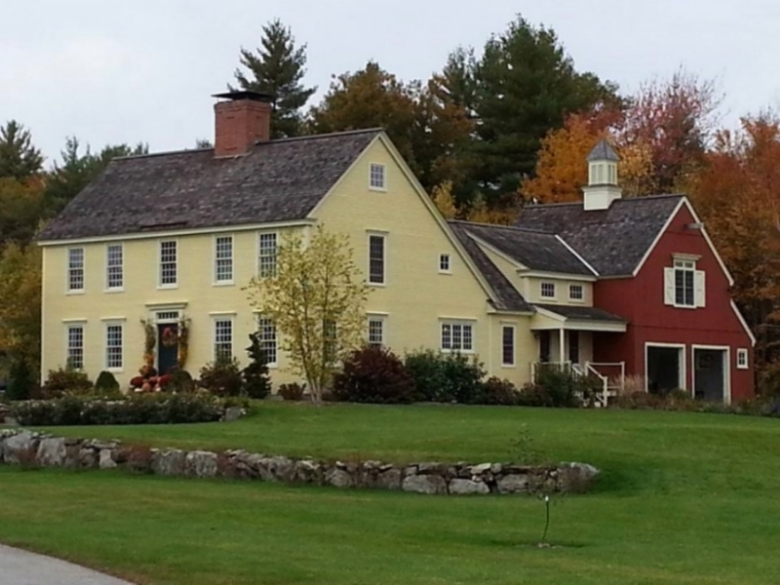
...would IMHO look great on a piece of beachfront property on Lake Michigan. Fiber-cement siding and exterior trim pieces are strong, fireproof, rot proof, and have color all the way through, so they will "patina" but not ever need painting. 12" thick SIPs on the roof, 8" SIPs in the walls, ICF basement, geothermal heat in the floors, standing seam metal roof, etc. etc. - you get the idea. If we achieve the "PassivHaus" energy consumption standard, it will consume 10% or less of a conventional structure, existing easily off-grid with a dozen or so solar panels, a couple of Tesla PowerWalls, and zero FF energy - while charging a BEV or two in the garage.
I WANT to build such a house, but it'll take a year or more after we buy the land. It will cost about 50% more than buying an existing structure in the depressed real estate market. I think the wife would rather travel with that extra money, and she has a point - doubtful we would recoup the extra building expenses in the 20 or so years remaining to us.
My argument is this:
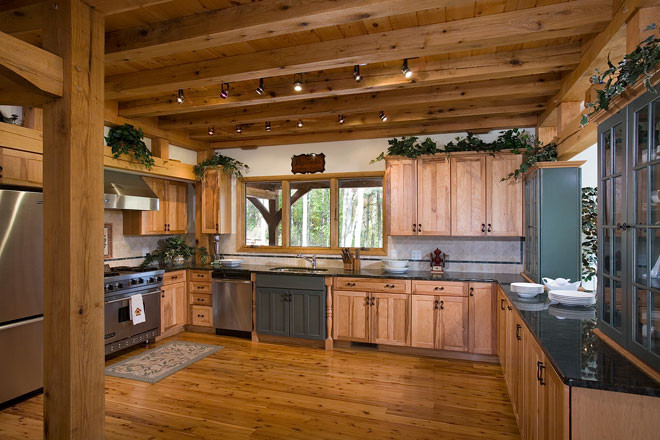
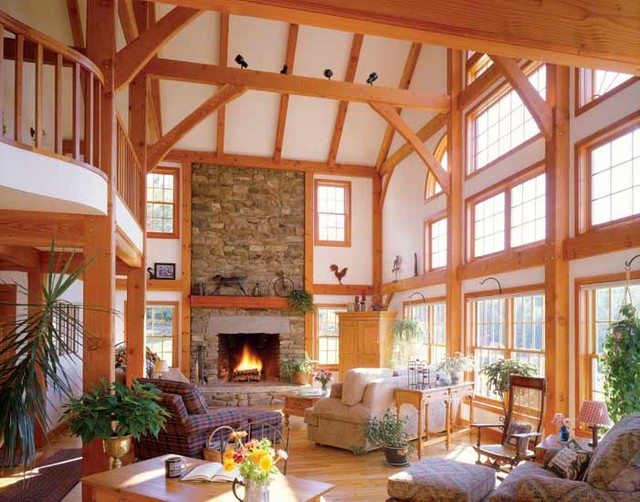

KaiserJeep 2.0, Neural Subnode 0010 0000 0001 0110 - 1001 0011 0011, Tertiary Adjunct to Unimatrix 0000 0000 0001
Resistance is Futile, YOU will be Assimilated.
Warning: Messages timestamped before April 1, 2016, 06:00 PST were posted by the unmodified human KaiserJeep 1.0
Resistance is Futile, YOU will be Assimilated.
Warning: Messages timestamped before April 1, 2016, 06:00 PST were posted by the unmodified human KaiserJeep 1.0
- KaiserJeep
- Light Sweet Crude

- Posts: 6094
- Joined: Tue 06 Aug 2013, 17:16:32
- Location: Wisconsin's Dreamland
Re: Early Warnging Signs of Societal Collapse
I thought this article relevant to this topic.
http://gcaptain.com/globalization-world ... hits-wall/
http://gcaptain.com/globalization-world ... hits-wall/
-

Newfie - Forum Moderator

- Posts: 18501
- Joined: Thu 15 Nov 2007, 04:00:00
- Location: Between Canada and Carribean
Re: Early Warnging Signs of Societal Collapse
So, Kaiser, do they STILL make trees like those was used for those timbers in those houses?
Peak Timber, evidently -- but long past.
Peak Timber, evidently -- but long past.
-

jedrider - Intermediate Crude

- Posts: 3107
- Joined: Thu 28 May 2009, 10:10:44
Re: Early Warnging Signs of Societal Collapse
Oh, the trees are being made. They will be "done" in a few hundred years!
Having sources of wood for ship building and other uses has been a problem for thousands of years.
It's one of the reasons why collapse will be soooo tough, we have destroyed so much that we can't walk back our technology very easily. It's almost "forward or die." Except of course we have burned most of the oil we could have used to form plastics.
Having sources of wood for ship building and other uses has been a problem for thousands of years.
It's one of the reasons why collapse will be soooo tough, we have destroyed so much that we can't walk back our technology very easily. It's almost "forward or die." Except of course we have burned most of the oil we could have used to form plastics.
-

Newfie - Forum Moderator

- Posts: 18501
- Joined: Thu 15 Nov 2007, 04:00:00
- Location: Between Canada and Carribean
Re: Early Warnging Signs of Societal Collapse
What we lack in trees we have made up in technology. I recall a recent PBS video on a repair needed by "Old Ironsides", aka the USS Constitution, the oldest USN vessel in the registry. They needed a new corner on one of the main timber "bents" in the hull, and could not find an appropriate oak timber "elbow" of the proper dimensions, as she was originally built of old growth oaks grown here in the USA. So they made the elbow out of laminated lumber - stronger and much cheaper than chopping down a large oak tree, and more environmentally sound.
Modern timber frames - either for ships or houses, are made with second growth or even farmed timbers, and milled using CNC (Computer Numeric Control) machinery. Then they are assembled once in the factory to check fit, and once on site, using FF-powered cranes and other machinery. Even the centuries old craft of timber framing is very different now - although when you attend a school for timber-framers, you purchase traditional saws and chisels and they teach you the same woodworking skills.
Modern timber frames - either for ships or houses, are made with second growth or even farmed timbers, and milled using CNC (Computer Numeric Control) machinery. Then they are assembled once in the factory to check fit, and once on site, using FF-powered cranes and other machinery. Even the centuries old craft of timber framing is very different now - although when you attend a school for timber-framers, you purchase traditional saws and chisels and they teach you the same woodworking skills.
KaiserJeep 2.0, Neural Subnode 0010 0000 0001 0110 - 1001 0011 0011, Tertiary Adjunct to Unimatrix 0000 0000 0001
Resistance is Futile, YOU will be Assimilated.
Warning: Messages timestamped before April 1, 2016, 06:00 PST were posted by the unmodified human KaiserJeep 1.0
Resistance is Futile, YOU will be Assimilated.
Warning: Messages timestamped before April 1, 2016, 06:00 PST were posted by the unmodified human KaiserJeep 1.0
- KaiserJeep
- Light Sweet Crude

- Posts: 6094
- Joined: Tue 06 Aug 2013, 17:16:32
- Location: Wisconsin's Dreamland
Re: Early Warnging Signs of Societal Collapse
Newfie wrote:I thought this article relevant to this topic.
http://gcaptain.com/globalization-world ... hits-wall/
Sounds like (finally) globalization is topping out, and I expect international shipping to decline further over time. Automation is now idling Chinese workers in droves, as robots (also manufactured in China) are now distinctly cheaper than even Chinese laborers. It is predictable that organized labor will now occur in China - what an irony in a nominally Marxist country!
The facts are that most jobs lost to automation are never coming back. CNC machinery is being used in timber framing, and even conventional homes are no longer "stick built", they are assembled as flat panel modules in a factory with CNC machinery, then stacked/trucked to the homesite and assembled via crane and forklift. Better home quality, higher insulation value, lower cost, faster construction, less materials wasted, and far less labor.
I felt empowered yesterday after a portable air conditioner repair. The unit was a useful 14,000 BTU size, was about 5 years old and made in China. Still, it was the only A/C I had and it had failed in 96-degree F weather. I could not find any service information whatsoever online, and considered replacing it, which would have cost $400-$500 (HOA rules forbid cheaper window-mounted units when visible from the street). But I thought WTH, I might as well try. Two hours of my time (mostly removing and replacing the shroud), a new $0.07 crimped-on electrical connector, and about 12" of double-sided tape, and it came to life again.

OK, so it really was not a challenge for an experienced EE. But I saved money, landfill space, and the raw materials that a new unit would have consumed. The world is what you make of it. If we can't afford to replace technology, we can darned sure practice our tinkering skills.
KaiserJeep 2.0, Neural Subnode 0010 0000 0001 0110 - 1001 0011 0011, Tertiary Adjunct to Unimatrix 0000 0000 0001
Resistance is Futile, YOU will be Assimilated.
Warning: Messages timestamped before April 1, 2016, 06:00 PST were posted by the unmodified human KaiserJeep 1.0
Resistance is Futile, YOU will be Assimilated.
Warning: Messages timestamped before April 1, 2016, 06:00 PST were posted by the unmodified human KaiserJeep 1.0
- KaiserJeep
- Light Sweet Crude

- Posts: 6094
- Joined: Tue 06 Aug 2013, 17:16:32
- Location: Wisconsin's Dreamland
Re: Early Warnging Signs of Societal Collapse
KaiserJeep wrote:Newfie wrote:I thought this article relevant to this topic.
http://gcaptain.com/globalization-world ... hits-wall/
Sounds like (finally) globalization is topping out, and I expect international shipping to decline further over time. Automation is now idling Chinese workers in droves, as robots (also manufactured in China) are now distinctly cheaper than even Chinese laborers. It is predictable that organized labor will now occur in China - what an irony in a nominally Marxist country!
The facts are that most jobs lost to automation are never coming back. CNC machinery is being used in timber framing, and even conventional homes are no longer "stick built", they are assembled as flat panel modules in a factory with CNC machinery, then stacked/trucked to the homesite and assembled via crane and forklift. Better home quality, higher insulation value, lower cost, faster construction, less materials wasted, and far less labor.
I felt empowered yesterday after a portable air conditioner repair. The unit was a useful 14,000 BTU size, was about 5 years old and made in China. Still, it was the only A/C I had and it had failed in 96-degree F weather. I could not find any service information whatsoever online, and considered replacing it, which would have cost $400-$500 (HOA rules forbid cheaper window-mounted units when visible from the street). But I thought WTH, I might as well try. Two hours of my time (mostly removing and replacing the shroud), a new $0.07 crimped-on electrical connector, and about 12" of double-sided tape, and it came to life again.
OK, so it really was not a challenge for an experienced EE. But I saved money, landfill space, and the raw materials that a new unit would have consumed. The world is what you make of it. If we can't afford to replace technology, we can darned sure practice our tinkering skills.
Why would anyone live in an HOA? Are you all just looking for one more layer of government? Like the: Federal, State, County, and City governments don't control your lives enough. Lets make another layer of government to live by, four layers isn't nearly enough. After all without an HOA, some terrible person may paint their door red or some other atrocity.
Enjoy those pretty chains.......
Cliff (Start a rEVOLution, grow a garden)
-

careinke - Volunteer

- Posts: 4694
- Joined: Mon 01 Jan 2007, 04:00:00
- Location: Pacific Northwest
Re: Early Warnging Signs of Societal Collapse
There is no way that high ceiling-ed living room with a working fireplace is energy efficient.KaiserJeep wrote:Tanada wrote:-snip- Point being you can build as super duper of a house as your heart desires, but if it actually lasts 50 years and is occupied the whole time it will be getting updates over those years no matter how carefully you plan it now.
Yes, but one can address the basic structure itself and make that strong, weather-resistant, fireproof, low maintenance, and rot-resistant. There are timber-framed homes on Nantucket, some built from timbers salvaged from shipwrecks, that have been around since the late 1600's, with periodic (every 30-50 years) replacement of the cedar shingles on roof and exterior walls. Nantucket's oldest house, a timber frame saltbox, dates from 1685:
There is a corn grist windmill that was built in 1646, also from salvaged ship's timbers:
And yes they still make trees large enough to saw house timbers from.
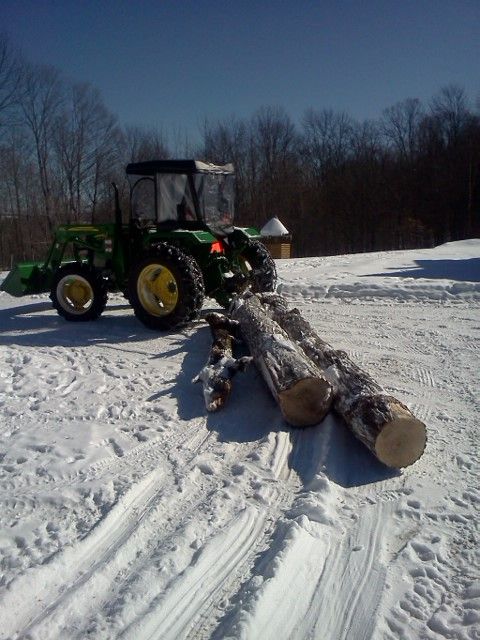
-

vtsnowedin - Fusion

- Posts: 14897
- Joined: Fri 11 Jul 2008, 03:00:00
Re: Early Warnging Signs of Societal Collapse
VT,
Sure you can find a few, but not as old slow growth with fine growth rings. You can't find enough to build a fleet of sailing ships or enough to house any significant number of people.
Timber shortage has driven politics since before the Venitians.
Sure you can find a few, but not as old slow growth with fine growth rings. You can't find enough to build a fleet of sailing ships or enough to house any significant number of people.
Timber shortage has driven politics since before the Venitians.
-

Newfie - Forum Moderator

- Posts: 18501
- Joined: Thu 15 Nov 2007, 04:00:00
- Location: Between Canada and Carribean
Re: Early Warnging Signs of Societal Collapse
Carinke,
Long story short. Philladelphia, 1887 house in historic district. I painted the doors and trim church door red, historically apprpriate color. I got annonomoyous hate notes pinned to the front door from my neighbors. 20 years ago, still red!
Long story short. Philladelphia, 1887 house in historic district. I painted the doors and trim church door red, historically apprpriate color. I got annonomoyous hate notes pinned to the front door from my neighbors. 20 years ago, still red!
-

Newfie - Forum Moderator

- Posts: 18501
- Joined: Thu 15 Nov 2007, 04:00:00
- Location: Between Canada and Carribean
Re: Early Warnging Signs of Societal Collapse
Newfie wrote:VT,
Sure you can find a few, but not as old slow growth with fine growth rings. You can't find enough to build a fleet of sailing ships or enough to house any significant number of people.
Timber shortage has driven politics since before the Venitians.
I think the present supply is adequate considering modern methods such as plywood and laminated timbers. Even the Constitutions masts were/are composites rather then a single tree trunk. And who would build a ship hull out of anything besides steel or fiberglass today?
If you look at my woods here it has been selectively cut periodically sense 1790+/- but if you count the rings on one of the larger trees when you cut it they are 150 years old and the growth rings are often quite small.

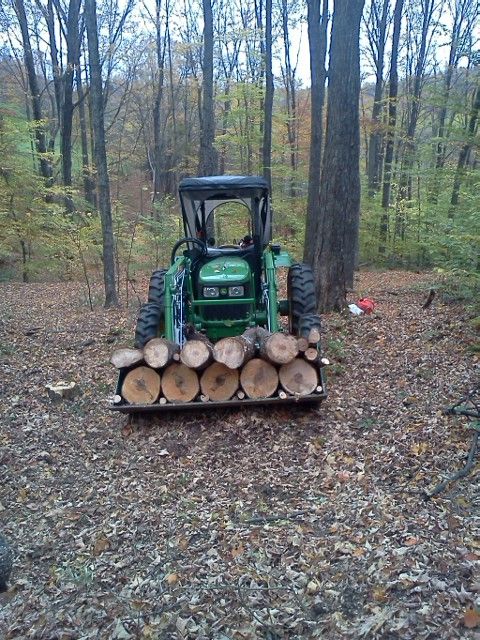
-

vtsnowedin - Fusion

- Posts: 14897
- Joined: Fri 11 Jul 2008, 03:00:00
Re: Early Warnging Signs of Societal Collapse
VT,
You have a fine woods. So do I, but only 100 years old. Your woods may meet all your needs. And, just to note, I have 2 steel sailboats. I also have a pic of a sailboat with scarfed wooden masts, rotted out and on the ground.
During collapse eventually the resources to make steel and fiberglass and composites will become scarce. It's quite possible that all our remaining woodlands will be cut, stripped, to heat the masses of urban and suburban homes. You and I live in a blessed time, it will not continue forever.
I'm not saying when this will happen, maybe not for another 150 years. But happen it will.
So you are right for you time and your place. You are most assuredly not right for Haiti now or for here in the future.
We have different time and location perspectives is all. Yours may be right for you. It's not right for the vast majority of people.
You have a fine woods. So do I, but only 100 years old. Your woods may meet all your needs. And, just to note, I have 2 steel sailboats. I also have a pic of a sailboat with scarfed wooden masts, rotted out and on the ground.
During collapse eventually the resources to make steel and fiberglass and composites will become scarce. It's quite possible that all our remaining woodlands will be cut, stripped, to heat the masses of urban and suburban homes. You and I live in a blessed time, it will not continue forever.
I'm not saying when this will happen, maybe not for another 150 years. But happen it will.
So you are right for you time and your place. You are most assuredly not right for Haiti now or for here in the future.
We have different time and location perspectives is all. Yours may be right for you. It's not right for the vast majority of people.
-

Newfie - Forum Moderator

- Posts: 18501
- Joined: Thu 15 Nov 2007, 04:00:00
- Location: Between Canada and Carribean
80 posts
• Page 3 of 4 • 1, 2, 3, 4
Return to Geopolitics & Global Economics
Who is online
Users browsing this forum: No registered users and 28 guests
